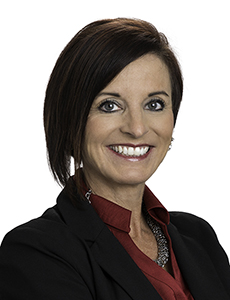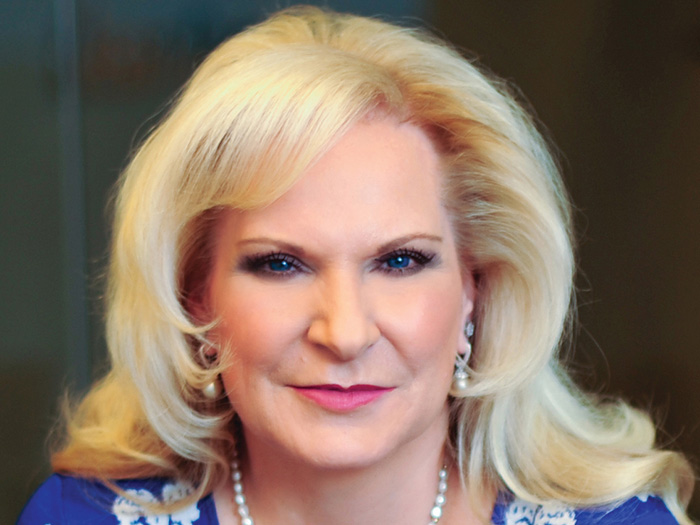Kristine Kennedy of Healthesystems on Innovation in Workers’ Comp Communication and Technology Integration

Risk & Insurance® recently spoke with Kristine Kennedy, Senior Vice President of Product Innovation & Strategy at Healthesystems, about how digital communication tools and emerging technologies are changing the landscape of workers’ compensation.
In this Q&A, Kennedy discusses the importance of meeting injured workers where they are, the rise of AI in claims management, and how empathy plays a crucial role in improving outcomes.
What follows is a transcript of the discussion, edited for clarity and length.
Risk & Insurance®: What are some novel ways that service providers and workers’ compensation professionals can connect with injured workers and guide them through the claims experience?
Kristine Kennedy: In today’s technology-driven world, meeting injured workers where they are and addressing their communication needs is crucial. Many people, myself included, don’t answer calls from unfamiliar numbers.
To effectively engage with injured workers, we must integrate high-touch and low-touch models of connection to align with their preferred communication methods. This involves leveraging digital communications and channels where appropriate, and using data and insights to understand when and how to interact with injured workers, guiding them through their recovery journey and simplifying the process.
It’s important to recognize that workers’ compensation pharmacy spend accounts for only about 1% of activity in the retail pharmacy space. This can lead to confusion for injured workers, pharmacists, and prescribers who are more accustomed to the group health, commercial, Medicaid, and Medicare markets, as the workflows in workers’ comp differ. By tailoring interactions through live conversations or digital channels, we aim to provide clear guidance on what steps to take and when, making the process smoother for all involved parties.
R&I: Is texting becoming the preferred contact method for younger generations entering the workforce?

Kristine Kennedy, Senior Vice President of Product Innovation & Strategy, Healthesystems
KK: Texting is indeed becoming a preferred communication method for younger generations in the workforce. As more digital natives enter professional roles, they bring with them a familiarity and comfort with texting as a primary means of communication.
This shift towards texting is driven by its immediacy, convenience, and less formal nature compared to email or phone calls. However, it’s important for organizations to establish clear guidelines around the appropriate use of texting in a professional context to ensure effective communication and maintain professionalism.
R&I: Is texting the preferred communication method for the majority of people these days?
KK: Yes, we’re seeing high adoption rates related to text engagement and the results that come from it. Since deploying our digital communication capabilities, we’ve seen a 278% increase in usage of our pharmacy network search tools. This suggests that when we provide the information directly, people are more likely to use these resources than if they had to seek them out on our website.
Beyond simple text messaging, for example with more robust digital experiences such as a web-based app, we’re also seeing a lot of engagement. Interestingly, 46% of the time, injured workers are accessing information to answer their questions during off-hours and weekends when claims staff may not be available. We hope that by providing these resources, we’ll see less frustration-driven engagement with attorneys.
R&I: What strategies have you found effective in fostering empathy among your staff when interacting with injured workers?
KK: Empathy can be demonstrated throughout an organization by connecting everyone to the purpose behind their work and the impact it has on the end user. We strive to help our entire team, from developers to customer-facing roles, understand the significance of their contributions in making the process smoother for injured workers.
To foster this understanding, we share real-life examples of injured workers’ experiences. This helps our staff develop a deeper appreciation for the impact they can have on an individual’s road to recovery.
By tying the work of each team member to the ultimate goal of supporting injured workers, we cultivate a culture of empathy that permeates every aspect of our organization. This approach ensures that empathy is not just a front-line concern but a core value that guides our decision-making and interactions at every level.
R&I: What differentiates your company from other PBMs in the market?
KK: Our differentiation lies in our commitment to truly understanding each of our customers. While they all provide insurance to employers and serve injured workers, each has a unique culture, way of working, and priorities. We pride ourselves on getting intimate with our customers to meet them where they are and help them achieve their short and long-term goals.
Another key area of investment for us is in new technologies and advanced analytics. We leverage tools like natural language processing and machine learning to improve efficiency, effectiveness, and quality of work. These AI-driven solutions help us make better decisions and drive improved automated workflows.
Importantly, we’re not aiming to take the human out of the process. Instead, we’re ensuring that human efforts are focused where they’re most effective and needed. By strategically integrating AI, we can support our team in delivering the best possible outcomes for our customers.
R&I: Can you provide a more specific example of how you’re using AI to support your teams?
KK: Within our PBM program, we offer a high-touch clinical intervention in which we identify high-risk or high-complexity claims. One of our clinical intervention pharmacists takes a deep dive on the injured worker’s medical history, with the goal to come back to the prescribing physician with recommendations on how to optimize therapy in ways that will improve the injured worker’s safety and effectiveness of their treatment. Often these recommendations also end up in significant cost savings for our customers. The results of this intervention are significant, but it can be very labor intensive. This where a technology like natural language processing, or NLP, can play a role.
We have been using NLP as a part of this process for some time now, and it’s enhanced the intervention in a number of ways. There have been significant efficiency gains as it helps reduce the manual legwork. Beyond that, it’s also helped provide a more holistic view of the injured worker patient to help inform clinical treatment recommendations, by helping to identify social, behavioral and comorbid factors that can impact whether an injured worker’s prescribed care is appropriate or effective.
The key phrase here is “help inform” as it is the clinical pharmacist who ultimately makes the recommendations. Technology is just an aid.
R&I: Are there any lessons learned you have to share based on your experience with advanced technologies like AI?
KK: It’s important to trust but verify. We underwent a significant period of testing and validation in the NLP use case I described. And as I mentioned, ultimately it is the person at the end of those technology-driven insights whose role it is to do the validation and decision-making.
While AI is not perfect, and some clarification might be needed, the efficiencies and added value we are seeing is substantial.
The same principle applies to analytic models when it comes to predicting certain behaviors and activities. It’s crucial to get to the right level of confidence to ensure you feel good about the models you’re bringing forward to drive new workflows.
R&I: What are some cybersecurity best practices that organizations in the health care claims supply chain should follow, especially when dealing with sensitive medical data?
KK: Cybersecurity in the health care claims supply chain involves several key areas. It starts with robust training programs to educate the organization about the various cybersecurity issues they may encounter. Using real examples that the organization has experienced throughout the year can make the training more relevant and effective in helping staff avoid potential security pitfalls.
From a contractual standpoint, all components of the health care supply chain must abide by certain requirements to protect customer and injured worker data. This includes undergoing regular independent reviews and audits, such as SOC 1, SOC 2, and URAC audits, to identify and address any security gaps within the organization.
For claims professionals, tight integration between systems often requires secure connections. Leveraging single sign-on with multifactor authentication helps ensure that the connections between organizations, such as a carrier and a PBM, remain secure.
R&I: Are the resources needed to comply with oversight in cybersecurity growing from year to year? Does it require more and more resource allocation for companies annually?
KK: Absolutely, it’s a growing concern. We have a dedicated security officer here with a team of employees. They utilize a variety of monitoring tools to constantly assess our systems and processes.
These tools are designed to detect attacks on our system, identify potential vulnerabilities, and ensure the protection of all customer and company data. The resources required to maintain this level of vigilance are indeed increasing year over year.
R&I: Which compounds, medications or pieces of medical equipment could potentially be inflationary in price or problematic in terms of usage?
KK: We are currently closely monitoring the potential impact of tariffs on medications and ancillary medical equipment. The situation is changing daily, making it difficult to predict the full extent of the effects without a crystal ball.
However, if the tariffs remain in place, we anticipate that they will impact the prices of many medications and equipment, such as beds and wheelchairs. This could have far-reaching consequences for our industry and the entire healthcare system.
As a result, we are working to stay ahead of these developments and understand the implications, so that we can be prepared to address any challenges that may arise.
R&I: What are your thoughts on the new non-opioid pain medication, Journavx, that has recently hit the market?
KK: Journavx is the first FDA-approved non-opioid pain medication to hit the market in many years. It will be interesting to observe how it replaces many of the opioids currently in use.
We are currently evaluating the anticipated cost of this medication, which appears to be in the mid-to-high range based on the values set for it. This is something we will start monitoring from a trending perspective to see its effects on the market and patient care.
R&I: What do you find most engaging or exciting about working in the workers’ compensation sector?
KK: It’s a fascinating time in workers’ compensation due to the confluence of several factors. First, the industry is undergoing a period of rapid technological advancement, with new tools and platforms emerging to streamline processes and improve outcomes. This digital transformation is reshaping how we approach claims management, medical treatment, and return-to-work strategies.
Second, the changing nature of work itself presents new challenges and opportunities. The rise of the gig economy, remote work, and the increasing prevalence of mental health issues in the workplace require us to adapt our practices to better serve the evolving needs of both employers and employees.
Finally, the regulatory landscape is constantly shifting, with new laws and guidelines impacting how we operate. Staying abreast of these changes and ensuring compliance is critical to success in this dynamic environment.
It’s an exciting time to be in workers’ compensation, as we have the opportunity to innovate, collaborate, and make a real difference in the lives of injured workers. &










